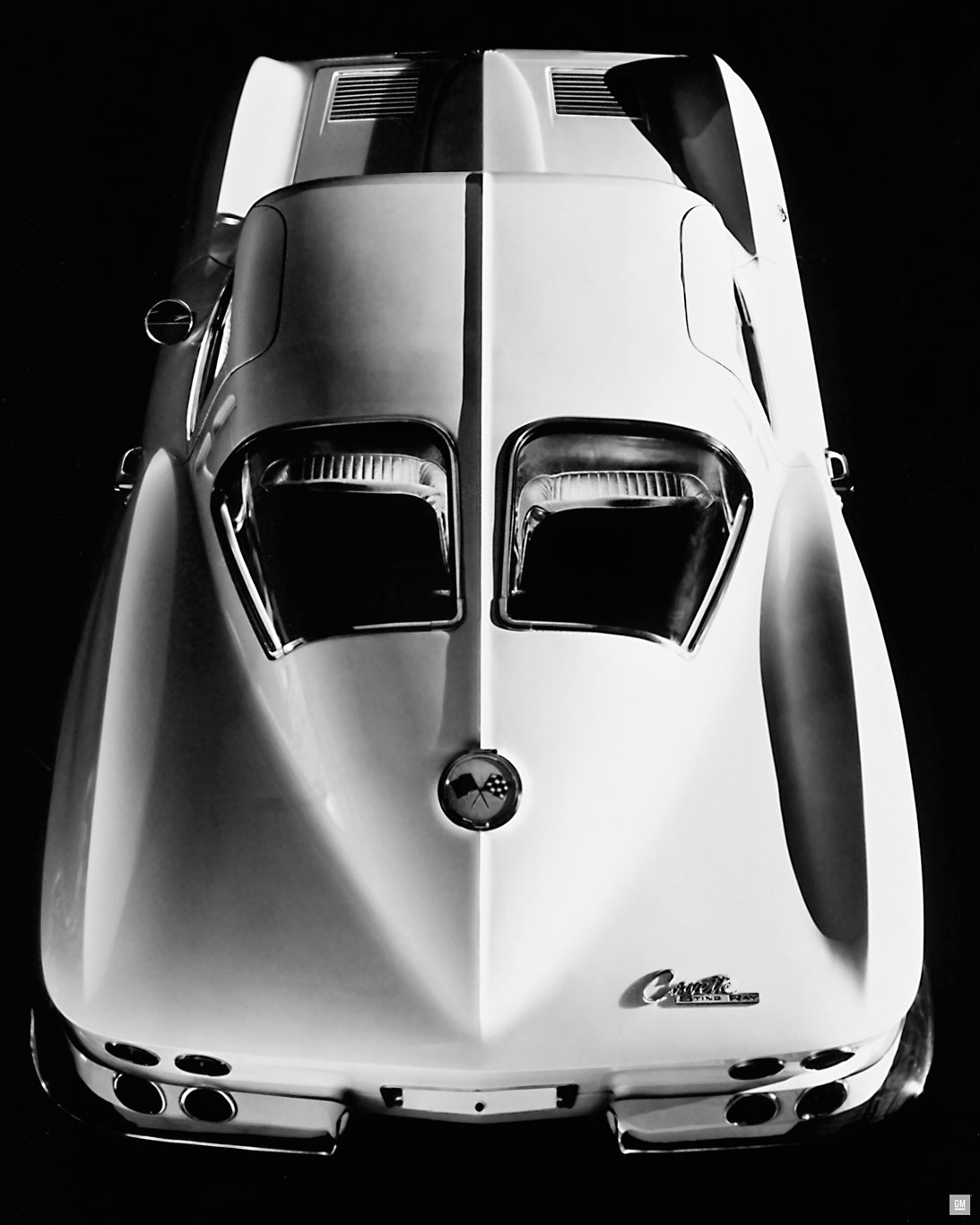A quick look back at the Corvette generations
Years of debate have not been able to resolve whether the Chevrolet Corvette is the original American sports car, but this much is certain: For six decades, the ’Vette has been an object of desire for millions, building on a reputation for world-class style and performance. Here are the major milestones in the car’s seven generations of development:
1953-62: With its dream-car styling promising more thrills than its Blue Flame six-cylinder and Powerglide automatic could deliver, the 1953 Corvette got off to a wobbly start. Chevy’s new 265 cubic-inch V-8 and a three-speed manual steered the ’Vette toward a righteous path in 1955. The ’56 restyle turned it into a beauty, and a 240-horse engine option put fire in its tail.
The ’57 was a turning point, with an available four-speed and a 283 cube/283-horse engine fed by Rochester fuel injection. A 1958 four-headlight restyle and power boosts drove sales upward, and in 1960, the Corvette won its class at Le Mans and starred in the “Route 66” TV series. In ’61, a bobtail look from the Sting Ray racing prototype hinted at shapes of things to come, and for ’62, new 327-ci engines offered up to 360 hp.
1963-67: The design of the second-generation, or C2, ‘Vette was previewed by the Sting Ray prototype and Mako Shark concept car; even so, the 1963 Corvette Sting Ray caused a sensation in coupe and convertible styles. A new chassis introduced independent rear suspension for better handling. Hidden headlights rotated into place; alas, the coupe’s two-pane rear window, now a beloved icon of the era, lasted only one year.
Chevy went nuclear for 1965, introducing a 396-ci big-block V-8 rated at 425 hp. The ’65 also introduced four-wheel disc brakes along with optional side-exit exhausts and knock-off aluminum wheels. The 396 grew into the 427 for 1966, and in 1967 Chevy offered the aluminum-head L-88 for the track.
1968-82: A 1968 redesign put a voluptuous new body on the Sting Ray chassis, the coupe featuring T-top roof panels and a removable glass rear window. Performance was hot for the first few years, with Chevy’s 350 replacing the 327 for ’69, the 427 becoming a 454 in ’70 and the Turbo Hydra-matic superseding the Powerglide. With its sales waning, the convertible was discontinued after 1975.
Even with safety and emissions regulations dulling the fun, ’Vette sales grew through the ’70s. The 1978 model revived a wraparound glass fastback like the C2’s. Production moved to Bowling Green, Ky., in 1981, and for the C3’s final year; Cross-Fire electronic fuel injection and a four-speed automatic signaled changes to come.
1984-96: An all-new chassis put the fourth-gen Corvette’s handling into Ferrari territory, especially with the Z-51 option, but the ride was bone-rattling. Power crept upward with Tuned Port Injection in 1985, and the oddball 4+3 overdrive manual transmission was used until a six-speed arrived for ’89. The convertible returned in ’86, starting at $32,000.
Seeking supercar speed, Chevy offered the Callaway-built twin-turbo engine in 1987, but then released its own super ’Vette with 1990’s ZR-1 packing a 375 hp (later, 405 hp) DOHC V-8. It cost $59,000 and just 7,000 were made through 1995. By then, the LT1 designation had returned for a 300 hp small block. The C4 bowed out with the 330 hp LT4 version and a special model, the Grand Sport, named for the aborted early ’60s ’Vette factory racer.
1997-2004: A new hydroformed chassis, LS-series aluminum V-8s and a rear-mounted transaxle made the C5 a world-class performer. A third body style, the fixed-roof coupe, looked like a convertible with a permanent hardtop and was used as the base for the Z06 ultra-performance model.
2005-13: The Corvette went gunning for the world’s best with a new, slightly smaller body – now with exposed headlights – and increasingly powerful LS engines. The Z06 had its own aluminum frame and hand-built 505-horse 427-ci small block, while a supercharged 638 hp 6.2-liter LS9 could power the resurrected ZR1 to 205 mph.
2014-present: Imagine the 1963 Sting Ray teleported 50 years forward, absorbing half a century of progress in performance, handling, efficiency, safety and comfort. What else would you call the result but Sting Ray (the nameplate now squashed to Stingray)? The C7 ’Vette starts out with 455 horsepower and can hit 180 mph. Oh, and it’s rated at 29 highway MPG. That makes it a bargain at $55,000.


